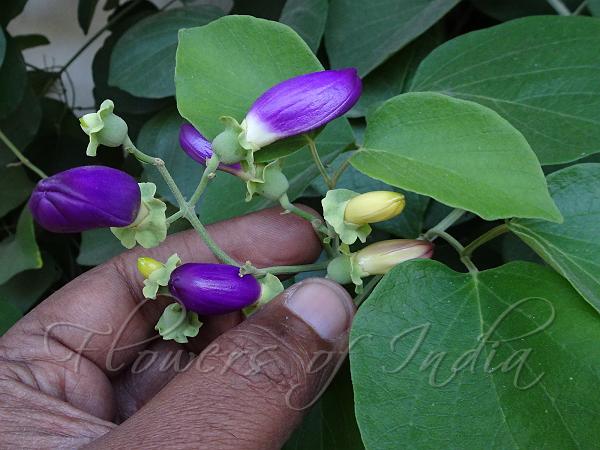|
| Duckbill Creeper |
|

|

| File size | 570046 |
| Original date | 1/11/20 4:36 PM |
| Resolution | 1600 x 1200 |
| Flash | Flash did not fire, auto |
| Focal length | 4.1mm |
| Exposure time | 1/60s |
| Aperture | 4.5 |
| Focus Distance | |
| Metering Mode | Multi-segment |
| Camera make | SONY |
| Camera model | DSC-WX500 |
| Sensor type |
|
|
|
|
Photo: |
Botanical name: Amphilophium paniculatum Family: Bignoniaceae (Jacaranda family)
Synonyms: Amphilophium mutisii, Amphilophium purpureum, Bignonia paniculata
Synonyms: Amphilophium mutisii, Amphilophium purpureum, Bignonia paniculata
Duckbill Creeper is a rare woody vine of
semi-evergreen seasonal forest and lower mountain rainforest of
Tropical America. Branchlets, leaf-stalks, and axis are angled,
hexagonal, scaly, velvet-hairy. Leaves are 2- or 3-foliolate;
leaf-stalks 2.3-7 cm long; leaflet-stalks 0.6-4.3 cm long; leaflets
broadly ovate to rounded, tapering, heart-shaped at base, 2.5-16 cm
long, 2-10.7 cm wide, sparsely glandular-lepidote on both surfaces, the
upper surface hairless. Flowers are 5-parted, aromatic, white, usually
variously tinged with maroon, turning deep purple, 3-4 cm long. They
are fleshy, somewhat two-lipped, with 3 narrow lobes opposing a single
broad lobe. Sepal-cup envelops one-third of flower, the margin broad,
double, lobed and wavy. Capsules are oblong-ellipsoid, blunt to
somewhat heart-shaped on either end, 9-16 cm long, to 4.5 cm wide.
Duckbill Creeper is native range is Mexico to Tropical America,
cultivated elsewhere.
| Identification credit: Rajesh Ramnarayan | Photographed in cultivation in Coimbatore, Tamil Nadu. |
• Is this flower misidentified? If yes,